
Mehrin Fatima
۔۔۔۔۔۔۔۔۔۔۔۔۔۔۔۔۔۔۔۔۔۔۔۔۔۔۔
There are three major deserts in Pakistan, Thar, Thal and Cholistan. Cholistan is the seventh largest desert in the world south of Bahawalpur covering an area of 6.65 million acres with a length of 480 km and a width of 32 km to 192 km. The locals call it "Rohi”. According to historians, it is derived from the Turkish word "chol” which means "sand” and astan is a Persian suffix meaning "earth”.
This region had a great civilization and in the past the river Hakra used to pass through here which is called Ghaghra in the neighboring country India. Ironically, the civilization of the river Hakra has disappeared.
The area later became the center of caravan trade, which led to the construction of several forts in the Middle Ages to protect trade routes – of which Dera and Fort are the best preserved examples. Rahim Yar Khan covers an area of 25,800 km2 in the districts. The nearest major city is Bahawalpur which is 30 km away from the edge of the desert. The length of the desert is about 80,480 km, with a width of between 32 and 192 km.
Cholistan had more than 400 Harappan sites in the 1970s, with an additional 37 in the 1990s. More evidence of settlements in Cholistan suggests that it was one of the most productive areas of the Indus Valley Civilization. In the post-Harappan period, Cholistan was part of the culture that flourished as a living regional form of Harappan culture followed by the Painted Gray Ware culture. Forts were built during the reign of – Dravidian fort is the best preserved example. Other major forts in Cholistan include Mirgarh, Jangarh, Marwatgarh, Mojgarh, Dinggarh, Khangarh, Khairgarh, Byzantgarh and Islamgarh.
The forts are part of UNESCO’s temporary list of local handicrafts and cultural heritage, and run parallel to the Indus and Sutlej rivers about 40 miles south. Smaller forts in the area include Bara, Bhagla, Dohinwala, Falji, Kandira, Lira, Murid, Machki, Nonkot, and Phalra forts. The backbone of Cholistan’s economy is animal husbandry.
Apart from livestock farming, there are other livelihood opportunities in the area. Camels in particular are used in Cholistan for their meat and milk, for transportation and for entertainment such as camel dancing. There are two types of camels in Cholistan: Marcha, or Mehra, used for transportation or running / dancing. Barella is used for milk production, and can produce 10-15 liters of milk per animal per day. Due to the nomadic lifestyle, the real wealth of the people is their cattle which are raised for sale, milked or cut for their own wool. Furthermore, as they were isolated, they had to rely on themselves for all their necessities such as food, clothing and all daily necessities. So all their crafts were born out of necessity in the beginning but later they started exporting their goods to other places as well. The estimated number of livestock in the desert is 1.6 million۔ Cholistan produces a very good variety of carpet wool compared to other parts of Pakistan. From this wool they make beautiful rugs, rugs and other woolen items. This includes blankets, which are also a local need in the desert as it is not always dusty and hot, but it is also very cold here on winter nights. Khes and Patu are also made of wool or cotton. Khes is a form of blanket with a black and white field and the base of the white ground in the belt. Cholistan is now selling wool because it makes maximum profit. It is noteworthy that cotton textile has always been a symbol of the craftsmanship of the Indus Valley Civilization. A variety of khaddar fabrics are made for local consumption, and there are khaddar bed linen and thick lingas. A beautiful cloth called Sufi is also made of silk and cotton, or cotton wrap and silk wool. Gargas are made in a variety of patterns and colors, including intricate embroidery, mirrors and patchwork. Ajrak is another feature of Cholistan. This is a special and delicate work that covers the basic fabric in indigo blue and red patterns on both sides of the fabric. Cotton turbans and shawls are also made here. Chonari is another form of dupatta, which has many colors and patterns such as dots, squares and circles. This desert has abundant resources but the rulers of the past kept it neglected and this desert was thirsty for life. The unfortunate deserts of the Cholistanis are now a paradise on earth
According to a UNICEF report, the groundwater level has dropped to a record low due to the lack of water. Groundwater has become unhealthy and toxic and contains a mixture of arsenic. There is an urgent need for Cholistan to be given the status of a district and the entire Cholistan area in Bahawalpur division to be divided into three tehsils, North, South and Central. Will also be safe. And the backwardness of the Cholistanis will end and the area will be on the path of development and prosperity. The problems of the Cholistanis in the three tehsils of Cholistan will be solved at their doorsteps. The Cholistanis will be provided with basic facilities like employment, treatment, education and water.The local people’s representative of Cholistan will be elected in the Provincial National Assembly and by raising the voice of the rights of Cholistan, he will be able to get all the rights that the citizens of Waziristan, Baltistan, Balochistan, Punjab, Sindh, Kashmir and Pakhtunkhwa also have. The Cholistanis request the government to establish a new Cholistan Textile City Tax Free Zone in connection with the C-Pack project for the development and prosperity of the ancient civilization, culture, identity and fundamental rights of the region. Cholistan Agricultural University should be established. Today, Cholistan has become an area of Bata Malik in the tehsils of several districts of Bahawalpur Division where the looting of the elite and the corruption of the administration will be nothing but the indifference of the rulers. Cholistan is a valley where people from all over the world travel. They come for but they leave regretting his plight While across the border from Cholistan, the Indian government has preserved the forts of Rajputana civilization in Rajasthan as if they were visiting Rajputana even today, but unfortunately Cholistan was discriminated against in Pakistan.
The Greater Cholistan Canal Project should be set up immediately to settle the central barren area of Cholistan. Construction of "Cholistan Highway” road from Sadiqabad to Fort Abbas. He said that illegal allotment should be canceled and Cholistani lands should be allotted on merit in a transparent manner.Cholistan "Waterway Project” should be made to meet the water shortage in Cholistan. Cholistan Sports Complex should be established for the promotion of sports. Cholistan Arts Council should be established for the protection and promotion of culture, arts and culture. Cholistan Literary Board should be established for the protection and promotion of science and literature. To promote tourism, all the forts and palaces of Cholistan should be renovated and special funds should be provided for them.Cholistan Veterinary University Medical Center should be set up for the treatment of animals۔ A hospital equipped with modern facilities should be set up in Cholistan. Marwari language should be given the status of local language of Cholistan. Marwari language should be made a separate box in the census form like other languages. Shahiwala to Nawab Kot Cholistan water supply project should be activated The "Cholistan Development Package” should also be approved in a specific part of Waseeb in the annual development budget.Water filtration plants should also be installed in Cholistani Chakuk. Seats should be allotted for Cholistani students in educational institutions.۔۔۔۔
This region had a great civilization and in the past the river Hakra used to pass through here which is called Ghaghra in the neighboring country India. Ironically, the civilization of the river Hakra has disappeared.
The area later became the center of caravan trade, which led to the construction of several forts in the Middle Ages to protect trade routes – of which Dera and Fort are the best preserved examples. Rahim Yar Khan covers an area of 25,800 km2 in the districts. The nearest major city is Bahawalpur which is 30 km away from the edge of the desert. The length of the desert is about 80,480 km, with a width of between 32 and 192 km.
Cholistan had more than 400 Harappan sites in the 1970s, with an additional 37 in the 1990s. More evidence of settlements in Cholistan suggests that it was one of the most productive areas of the Indus Valley Civilization. In the post-Harappan period, Cholistan was part of the culture that flourished as a living regional form of Harappan culture followed by the Painted Gray Ware culture. Forts were built during the reign of – Dravidian fort is the best preserved example. Other major forts in Cholistan include Mirgarh, Jangarh, Marwatgarh, Mojgarh, Dinggarh, Khangarh, Khairgarh, Byzantgarh and Islamgarh.
The forts are part of UNESCO’s temporary list of local handicrafts and cultural heritage, and run parallel to the Indus and Sutlej rivers about 40 miles south. Smaller forts in the area include Bara, Bhagla, Dohinwala, Falji, Kandira, Lira, Murid, Machki, Nonkot, and Phalra forts. The backbone of Cholistan’s economy is animal husbandry.
Apart from livestock farming, there are other livelihood opportunities in the area. Camels in particular are used in Cholistan for their meat and milk, for transportation and for entertainment such as camel dancing. There are two types of camels in Cholistan: Marcha, or Mehra, used for transportation or running / dancing. Barella is used for milk production, and can produce 10-15 liters of milk per animal per day. Due to the nomadic lifestyle, the real wealth of the people is their cattle which are raised for sale, milked or cut for their own wool. Furthermore, as they were isolated, they had to rely on themselves for all their necessities such as food, clothing and all daily necessities. So all their crafts were born out of necessity in the beginning but later they started exporting their goods to other places as well. The estimated number of livestock in the desert is 1.6 million۔ Cholistan produces a very good variety of carpet wool compared to other parts of Pakistan. From this wool they make beautiful rugs, rugs and other woolen items. This includes blankets, which are also a local need in the desert as it is not always dusty and hot, but it is also very cold here on winter nights. Khes and Patu are also made of wool or cotton. Khes is a form of blanket with a black and white field and the base of the white ground in the belt. Cholistan is now selling wool because it makes maximum profit. It is noteworthy that cotton textile has always been a symbol of the craftsmanship of the Indus Valley Civilization. A variety of khaddar fabrics are made for local consumption, and there are khaddar bed linen and thick lingas. A beautiful cloth called Sufi is also made of silk and cotton, or cotton wrap and silk wool. Gargas are made in a variety of patterns and colors, including intricate embroidery, mirrors and patchwork. Ajrak is another feature of Cholistan. This is a special and delicate work that covers the basic fabric in indigo blue and red patterns on both sides of the fabric. Cotton turbans and shawls are also made here. Chonari is another form of dupatta, which has many colors and patterns such as dots, squares and circles. This desert has abundant resources but the rulers of the past kept it neglected and this desert was thirsty for life. The unfortunate deserts of the Cholistanis are now a paradise on earth
According to a UNICEF report, the groundwater level has dropped to a record low due to the lack of water. Groundwater has become unhealthy and toxic and contains a mixture of arsenic. There is an urgent need for Cholistan to be given the status of a district and the entire Cholistan area in Bahawalpur division to be divided into three tehsils, North, South and Central. Will also be safe. And the backwardness of the Cholistanis will end and the area will be on the path of development and prosperity. The problems of the Cholistanis in the three tehsils of Cholistan will be solved at their doorsteps. The Cholistanis will be provided with basic facilities like employment, treatment, education and water.The local people’s representative of Cholistan will be elected in the Provincial National Assembly and by raising the voice of the rights of Cholistan, he will be able to get all the rights that the citizens of Waziristan, Baltistan, Balochistan, Punjab, Sindh, Kashmir and Pakhtunkhwa also have. The Cholistanis request the government to establish a new Cholistan Textile City Tax Free Zone in connection with the C-Pack project for the development and prosperity of the ancient civilization, culture, identity and fundamental rights of the region. Cholistan Agricultural University should be established. Today, Cholistan has become an area of Bata Malik in the tehsils of several districts of Bahawalpur Division where the looting of the elite and the corruption of the administration will be nothing but the indifference of the rulers. Cholistan is a valley where people from all over the world travel. They come for but they leave regretting his plight While across the border from Cholistan, the Indian government has preserved the forts of Rajputana civilization in Rajasthan as if they were visiting Rajputana even today, but unfortunately Cholistan was discriminated against in Pakistan.
The Greater Cholistan Canal Project should be set up immediately to settle the central barren area of Cholistan. Construction of "Cholistan Highway” road from Sadiqabad to Fort Abbas. He said that illegal allotment should be canceled and Cholistani lands should be allotted on merit in a transparent manner.Cholistan "Waterway Project” should be made to meet the water shortage in Cholistan. Cholistan Sports Complex should be established for the promotion of sports. Cholistan Arts Council should be established for the protection and promotion of culture, arts and culture. Cholistan Literary Board should be established for the protection and promotion of science and literature. To promote tourism, all the forts and palaces of Cholistan should be renovated and special funds should be provided for them.Cholistan Veterinary University Medical Center should be set up for the treatment of animals۔ A hospital equipped with modern facilities should be set up in Cholistan. Marwari language should be given the status of local language of Cholistan. Marwari language should be made a separate box in the census form like other languages. Shahiwala to Nawab Kot Cholistan water supply project should be activated The "Cholistan Development Package” should also be approved in a specific part of Waseeb in the annual development budget.Water filtration plants should also be installed in Cholistani Chakuk. Seats should be allotted for Cholistani students in educational institutions.۔۔۔۔
Mehreen Fatima hails from Muzaffargarh district, She did MA a Seraiki, she started writing on various topics from 2019, her writings are published in various publications of Seraiki Wasieb.
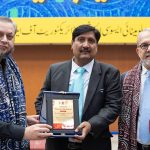




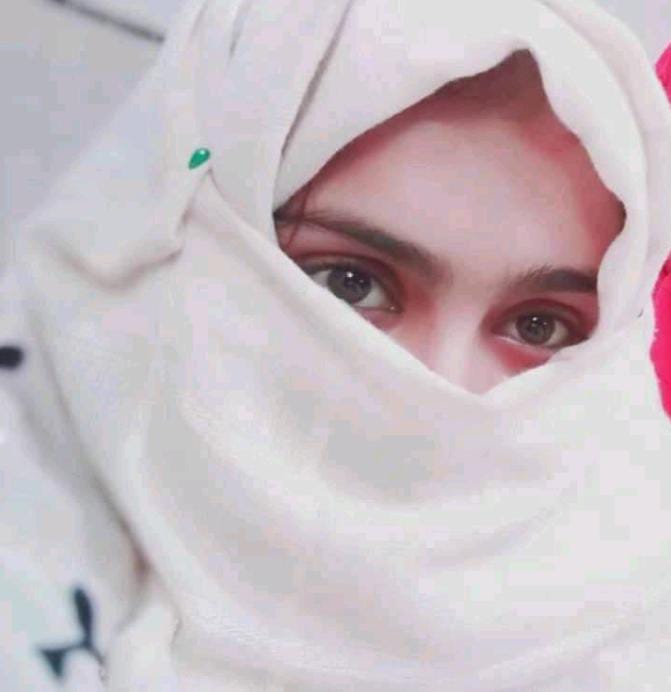
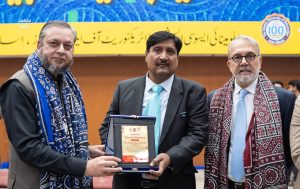
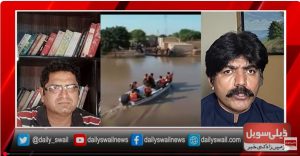

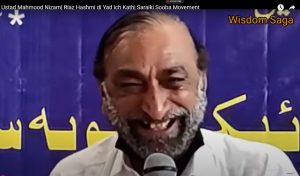
اے وی پڑھو
تانگھ۔۔۔||فہیم قیصرانی
،،مجنون،،۔۔۔||فہیم قیصرانی
تخیلاتی فقیر ،،۔۔۔||فہیم قیصرانی